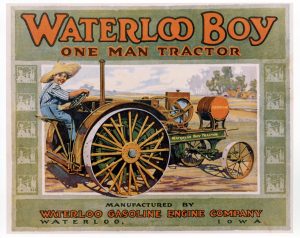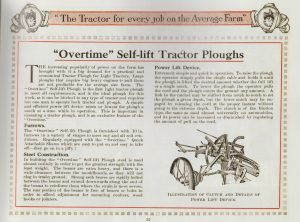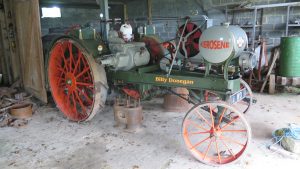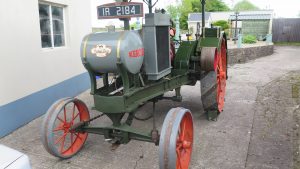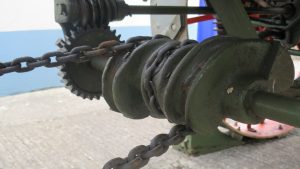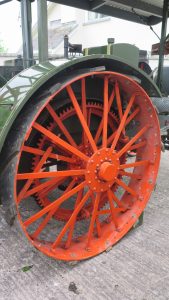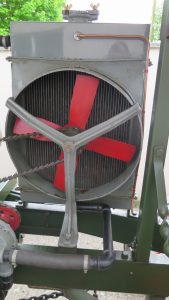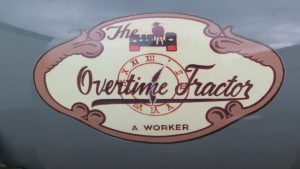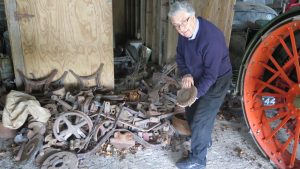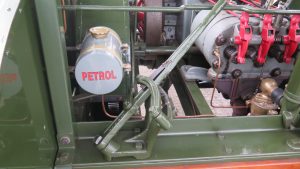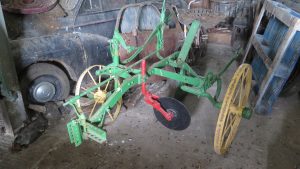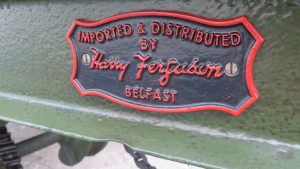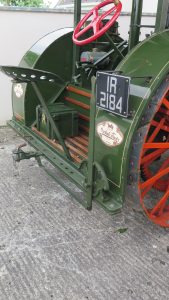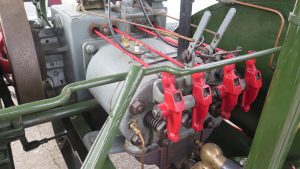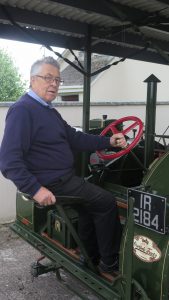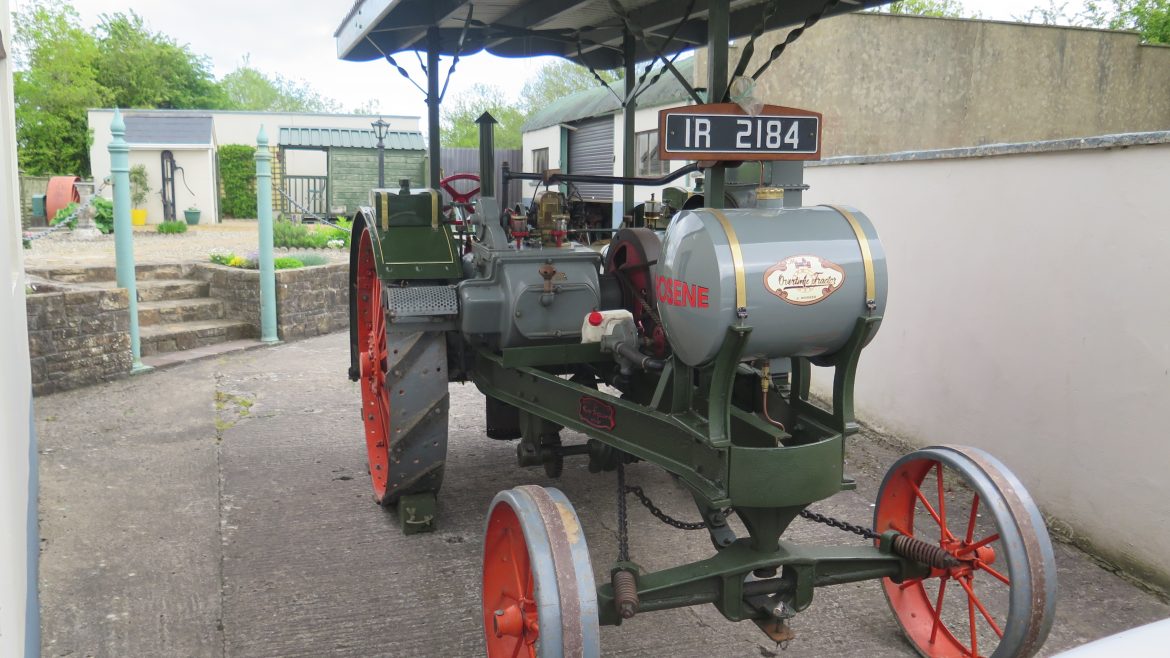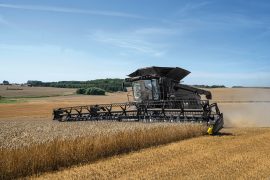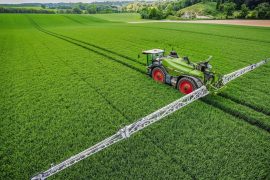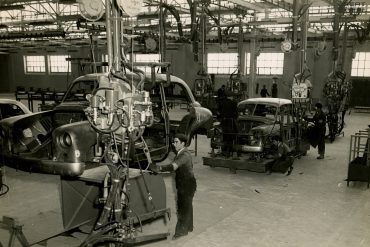The story of the Overtime tractor in Ireland was somewhat eclipsed by the development of Harry Ferguson’s hydraulic system and strangely there is a link between the two. The Overtime and John Deere’s Waterloo Boy tractor of the early 1900’s are also closely linked in that John Deere bought out the Waterloo Tractor company in 1918, to create its first tractor and to take hold of the yellow and green colour for its machines that now remains a world copyright for the American brand.
Harry Ferguson had his own part to play in the early success of the Overtime tractor. From a period of between 1916 and 1918 when John Deere took over the Waterloo Boy factory, Harry Ferguson was one of the first Irish agents for the Overtime tractor. The tractor was a Waterloo Boy in every sense, apart from its different colours.
Limerick-based Overtime tractor expert Billy Donegan, knows more about the history of the Overtime tractors in Ireland than probably anyone else. Billy has been collecting everything Overtime related that he could get his hands on, for many years.
He has been restoring some Overtime models at his yard near Feenagh, Charleville, Co Limerick over a period that spans more than 30 years. Since taking an Ovetime interest, Billy has restored his tractors to an impressive state that reflects their key part in Irish farming history.
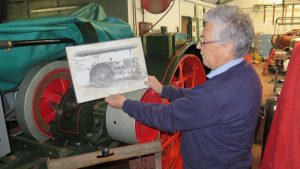
I spent an afternoon with Billy where he told me about the three Overtime tractors that retains and showed me the makings of at last one more. These are all very special tractors not just to Billy Donegan, but to Irish farming heritage as they were all bought new on Irish farms 100 years ago.
They play an important part in the history of Irish farm mechanisation story, involving the great Harry Ferguson in part of their development. It is said that Harry Ferguson learnt a lot from his Overtime experience where he personally called to every one of the 250 farms where he sold a tractor. Harry learnt from that experience as well as Overtime’s self-lift three and four furrow ploughs that were part of the overall package.
Some believe that he tested his own original three point linkage design on an Overtime tractor, before he had patented the design and later built it around the Model A tractor that was produced in conjunction with David Brown Tractors in 1936.
Ferguson wanted a tractor that was lighter than the Overtime. His Model A weighed in at 800kg (16 cwt) compared with 1.9t (39cwt) for the Overtime and 1.5t (30cwt) for the Fordson Major.
Billy Donegan reckons that he has the only three remaining tractors from the 250 originally sold here. He can trace one of the tractors to the Thompson farm from Highpark, Roscrea, Co Offaly, which was sold on to the farm by Hurst’s Garage of Tullamore in the period around 1916.
There were other American built tractors on the Irish market at that time, including the Mogul and Titan models. Their history is different and does not have the unique Harry Ferguson connection at a time of special significance for an emerging Irish nation.
Billy’s grandson, Billy Jnr has taken over his grandfather’s passion for Overtime tractors. He has learnt from the master and his knowledge of these rare tractors is now sought after by Overtime enthusiasts from around the world. In a recent US report for Overtime owners, it rated young Billy’s Overtime expertise, second only to that of long-time American expert Kenny Cass. Billy Jnr regularly receives calls and emails from around world as Overtime owners seek answers to their technical problems with these rare tractors.
The history of the Overtime name and logo
Billy Donegan recalled for me the history of the Overtime name and logo when I visited him. The tractors were bought from America from 1914 onwards to help Britain grow food as part of the World War I effort. Farm labour was getting scarce and this was the first period when machines could be seen as replacing farm human and horse labour.
The British government gave London-based JL Martin Ltd of Minories a licence to import about 6,000 tractors that were being produced as cheap fuel oil engines by the Waterloo Boy Tractor Company in the United States.
The deal included the fact that the name Waterloo Boy name could not be used. The British importer came up with the name Overtime for the tractors, just as the government was encouraging farm workers to work overtime on farms to produce as much food as possible to support the World War I war effort.
They supported this idea with a logo that consisted of a clock with the hands set at 5 past 6pm as 6pm was the finishing time for workers on many larger British farms. The aim was to encourage farm workers to give more time for food production.
In North America the Waterloo Boy tractor colours were yellow wheels and green bodywork, but this was not allowed to be used on the Overtime models. The London produced Overtime models were painted in three colours, British racing green and battleship grey for the bodywork and rotavator orange for the wheels.
It is interesting that the John Deere colours evolved from those of the Waterloo Tractor Company and remain a John Deere copyright to this day. John Deere stopped the supply of tractors to Overtime in 1918, while the tractors remained in use on many Irish farmers for years afterwards.
Overtime is a Spring Show hit in 1916
The Overtime tractor was on display at the Royal Dublin Society Spring Show in 1916 and the records of the show, held during the week of the 1916 Rebellion, show that it was priced at £255. The tractor was described as delivering 24hp at the belt pulley and 12hp at the drawbar and was a hit with the few farmers who attended the event.
The tractor was described as being, “a light all-round power plant, for drawing ordinary tillage implements as well as doing all of the belt work on the average farm. It will pull a 3 or 4 furrow plough ploughing at 7 acres per day; will handle equally well two mowers, two reapers and binders, drills, disc harrows, manure spreaders, etc. For belt work it will handle with power to spare, a 4ft 6in thresher and stacker, and all the food preparing machinery on the average farm.
“Owing to its light weight it is able to get over soft places, will readily drag out felled timber, and supply the power for sawing it up on the spot if necessary.”
The 1916 Overtime tractor was offered with an Overtime Self-Lift plough, either two or three furrow in design costing from £60. It had an automatic arrangement for lowering and raising the shares by the one operation made by the driver of the tractor. The Spring Show 1916 description added, “This plough with an Overtime tractor will do perfect work, ploughing about 7 to 8 acres per day. It does much superior work to the ordinary hand-steered rising plough and dispenses with the need of the ploughman.”
The brochure of the tractor in 1917, which Billy Donegan loaned to me, shows that the price of the tractor had risen significantly to £375 by March of that year, an increase of 47%!
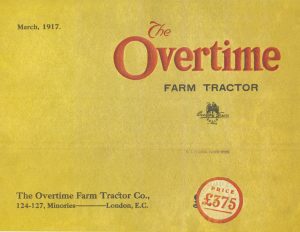
The farmers think of Overtime – an Irish response
In the sales brochure for the Overtime tractor that was produced in 1916, they gave a page to five user views about the tractors that were already in use. One interesting comment came from one of the then Overtime dealers, Duthie Large & Co based at Athy, Co Kildare.
They wrote to the London-based Overtime tractor company as follows: “We understand that you can dispatch another tractor at once, and, as requested, we are enclosing you a cheque for £5 and will thank you to send one forward immediately.
Mr. McGee of Ardee has been communicating with us about your tractor, and we have promised to take him out and let him see them at work any day he wishes to come here, and, if he a avails himself of our offer, we believe he will go back well satisfied. The tractors have done well harvesting, and Mr. Carty reaped 60 acres of barley in three days with two tractors and two Massey Harris 6ft binders, and in all he cut 130 acres and had no trouble.”
Duthie Large & Co was a Massey Harris dealer until the 1950’s. The company became a Massey Ferguson dealer after that and remained so until the early 1970’s. They retained a large stock of Massey Harris combine, binder and seeder parts up until they closed.
The Overtime tractor in details
The 1916 Overtime tractor was powered by a two-cylinder horizontal engine, the very engine that John Deere was to use for up to five decades later, right up until the 1960’s. The engine bore and stroke was very big compared with modern engines and the engine ran from 400 to 750rpm.
The engine was started with petrol and then the operator converts it over to cheaper paraffin. The starting procedure required the opening of compression cocks in the cylinder heads and injecting in about a ‘tablespoon’ of petrol to start the ignition process going. As soon as the engine would fire, the compression cocks needed to be quickly closed and the magneto controlled spark needs further adjustment to get the engine running smoothly on the paraffin.
This was a water cooled engine, with large water jackets and a large side mounted radiator to help with cooling. The engine has a mechanical governor system.
The Overtime tractor was fitted with a single forward and a single reverse speed gearbox operated by means of a foot clutch. The tractor could achieve a maximum of 3 miles per hour with the engine at higher speed.
There was a very detailed ‘Repairs and Instructions’ book provided with each tractor. This included care advice on every aspect of using and servicing the tractor. As with modern tractor, the Overtime company gave the usual advice, which is still valid to this day; “Don’t forget to study your instructions, everybody can learn.”
It also provided some solid advice including the following; “Don’t overload your tractor, never see how much it will do or you will create a tractor record for one day and a repairs record for a week. Tractors are made for reasonable service and will give it to you if you give it reasonable attention and fair treatment.”
